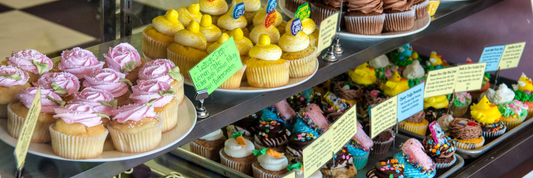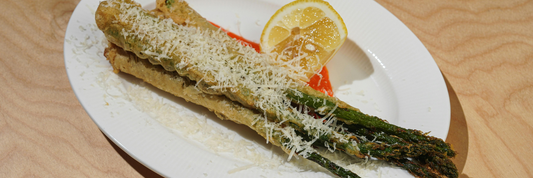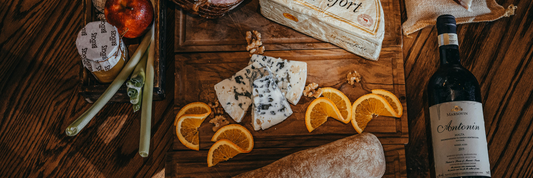The push towards sustainability has dramatically reshaped consumer preferences in recent years. As the demand for eco-friendly products grows, wooden cutlery has emerged as a popular alternative to traditional plastic utensils. This shift signifies not only an increase in awareness of environmental issues but also an opportunity for brands to strategically position themselves in a competitive market.
- How Is Wooden Cutlery Made?
- Wooden Cutlery vs Plastic Cutlery: Which Is Better?
- Exploring Common Sources of Wood for Cutlery
Overview of the growing demand for sustainable cutlery

With global plastic pollution on the rise, many consumers and businesses are seeking alternatives to disposable plastic. Wooden cutlery, being biodegradable and compostable, presents a practical solution. According to recent trends, the wooden cutlery market is projected to expand significantly, driven by both eco-conscious consumers and regulations aimed at reducing plastic waste.
Importance of strategic positioning in a competitive market

In a market overflowing with options, effective positioning is crucial. Brands must clearly communicate their unique value propositions to stand out. By understanding consumer perceptions, brands can better craft messaging that resonates with environmentally conscious buyers and meets the specific needs of various market segments.
Understanding the Market for Wooden Cutlery

Current trends in eco-friendly dining products
The dining industry's landscape is changing, with a significant uptick in the use of sustainable products. Reports indicate that consumers are not only looking for eco-friendly materials but also for products that align with their values. Wooden cutlery fits seamlessly into this paradigm, offering both a sustainable alternative and a unique aesthetic appeal.
Target audiences: restaurants, event planners, eco-conscious consumers
Identifying target audiences is essential for effective marketing. The primary segments for wooden cutlery include:
- Restaurants looking to enhance their sustainability credentials.
- Event planners requiring reliable and attractive options for catered events.
- Eco-conscious consumers seeking sustainable practices in their everyday lives.
Key Differentiators for Wooden Cutlery

Material quality and sustainability credentials
The quality of the wood used in cutlery significantly impacts consumer choice. Brands must emphasize the sustainable sourcing of their materials, ensuring certification from responsible forestry practices. Highlighting these credentials can build trust with consumers.
Design and functionality features
Aesthetics and usability are paramount. Wooden cutlery should not only perform well but also be visually appealing. Whether it’s rustic charm or sleek modernity, design matters. Companies should showcase how their products meet both functionality and style preferences.
Certifications and environmental compliance
Certifications can enhance credibility. Brands should consider acquiring relevant eco-labels to back up their sustainability claims, making it easier for customers to make informed decisions.
Positioning Strategies for Wooden Cutlery Brands

Sustainable Disposable Utensils for Events
Events are often where disposable utensils are most needed. Targeting event planners with messaging focused on biodegradability and compostability can drive sales.
- Highlight how these utensils enhance the environmental profile of events.
- Emphasize ease of disposal compared to traditional plastics.
Emphasizing Eco-Friendliness and Sustainability
Communicating the life cycle of wooden cutlery can resonate with consumers. Brands should craft stories about responsible sourcing, manufacturing processes, and the overall environmental impact of switching from plastic to wood.
Biodegradable Cutlery for Catering Services
Catering companies are increasingly searching for green alternatives to meet customer demands. Brands need to stress the combination of convenience, usability, and environmental benefits of their products.
Quality and Durability Messaging
It’s vital to communicate that wooden cutlery can be as durable as plastic when cared for correctly. Brands should compare their products to common alternatives, emphasizing the strength and usability of their offerings.
Customization and Branding Opportunities
Businesses can differentiate themselves through personalization. Offering options for custom logos and tailored branding can help clients align the cutlery with their corporate identity or event themes.
Pricing and Value Proposition

Balancing affordability with premium quality
While it’s important to convey the high quality of wooden cutlery, brands must also remain mindful of price sensitivity among potential buyers. A keen understanding of the balance between quality and affordability can enhance brand appeal.
Bulk purchase options and subscription models
Introducing bulk purchase options or subscription services can accommodate varying needs, attracting both frequent users and one-time customers.
Marketing Channels and Tactics

Digital marketing and social media campaigns
Utilizing digital platforms and social media for marketing is essential. These channels allow brands to showcase their products visually while educating consumers on sustainable practices.
Collaborations with restaurants and event organizers
Partnering with local restaurants and event organizers can amplify visibility. These collaborations not only increase product exposure but also legitimize the brand within these industries.
Educational content on sustainability benefits
Producing informative content about sustainability can enhance brand authority while helping consumers understand the impact of their choices.
Overcoming Challenges in Positioning

Addressing misconceptions about wooden cutlery
There are misconceptions that wooden utensils are inferior to plastic. Educating consumers about the benefits and proper use of wooden cutlery is crucial for overcoming these barriers.
Educating consumers on proper use and disposal
Brands should provide clear guidelines on how to best use and dispose of wooden cutlery to ensure consumers are informed and confident in their purchases.
Handling supply chain and quality consistency
Maintaining consistent quality and reliability in supply chains can present challenges. Brands need to invest in quality control and transparent sourcing to ensure customer satisfaction.
Measuring Success and Adapting Strategies

Tracking customer feedback and reviews
Collecting and analyzing customer feedback is essential to improving products and strategies. Positive reviews can strengthen brand reputation, while constructive criticism can guide adjustments.
Monitoring market trends and competitor actions
Keeping a close eye on market dynamics and competitors allows brands to remain adaptable and proactive in their positioning strategies.
Adjusting messaging and product offerings accordingly
Continuous evaluation of messaging and product features can help align them with emerging trends and consumer preferences.
Conclusion
Successfully positioning wooden cutlery within the marketplace requires a comprehensive understanding of consumer needs, effective storytelling, and a commitment to quality and sustainability. By proactively addressing challenges and focusing on the unique benefits of wooden cutlery, brands can lead the charge in the sustainable cutlery movement and ultimately contribute to a healthier planet.




